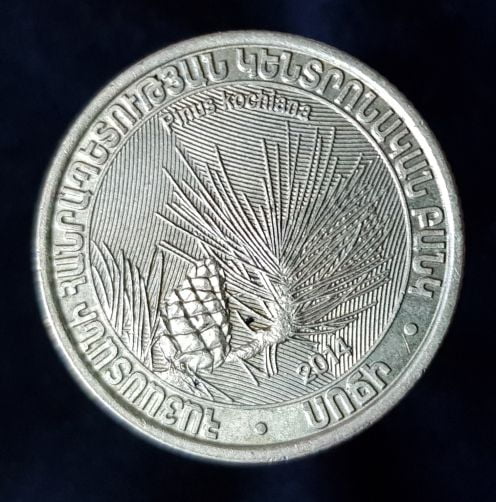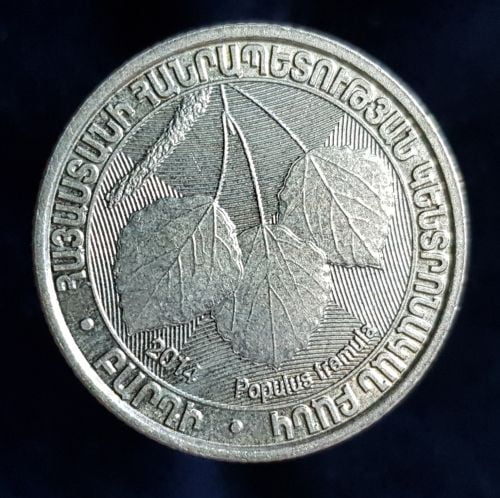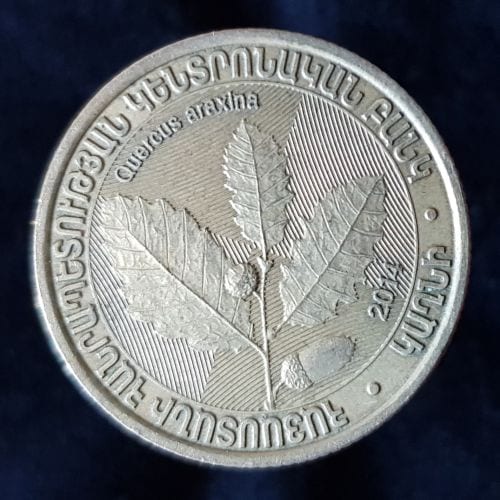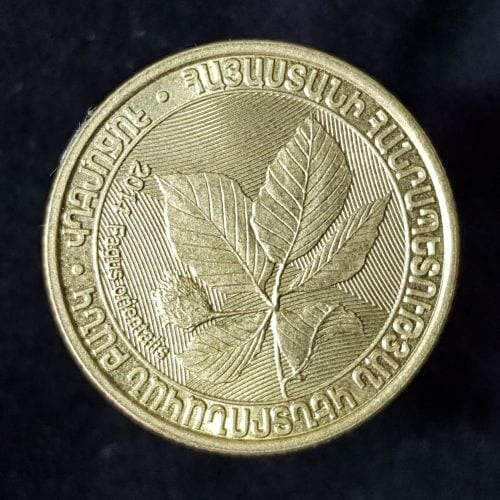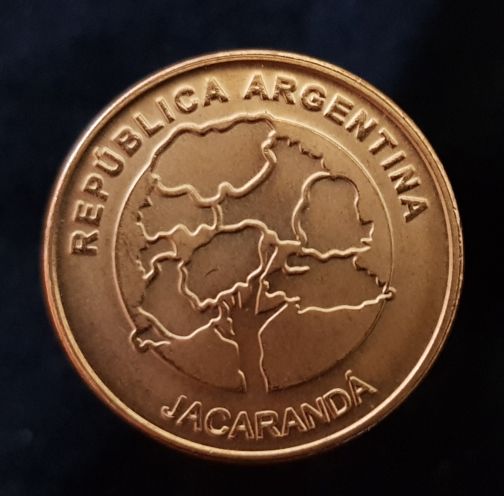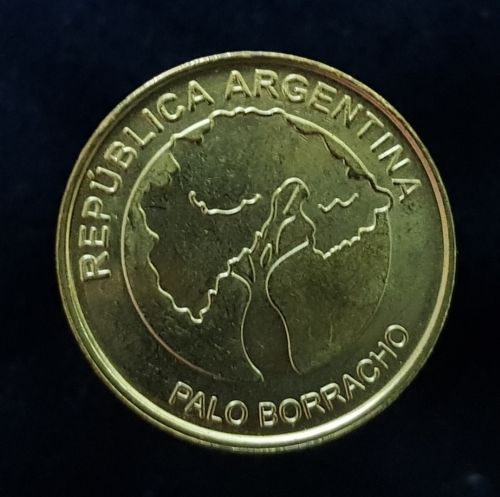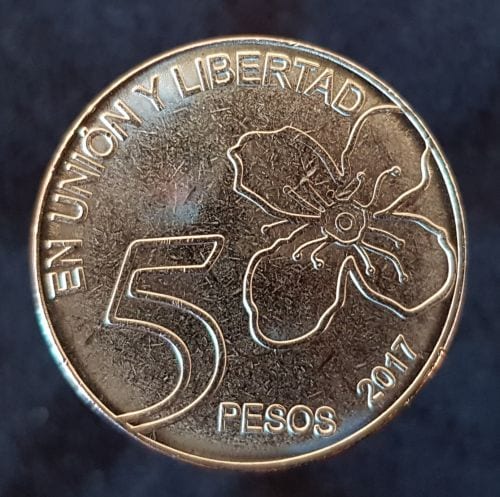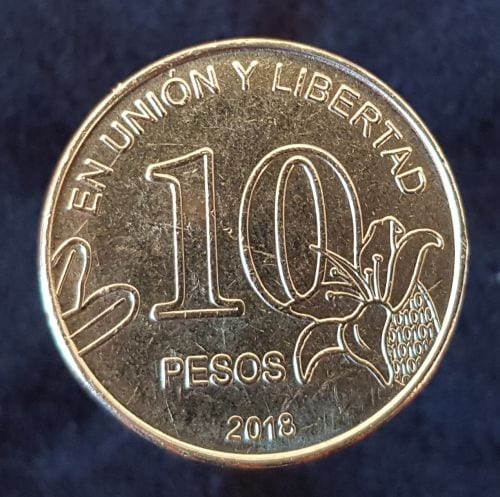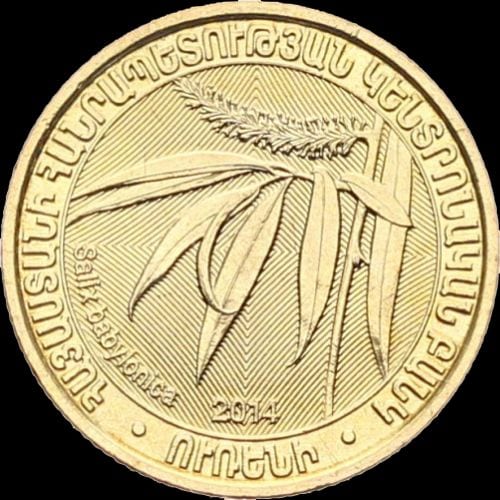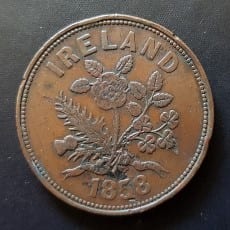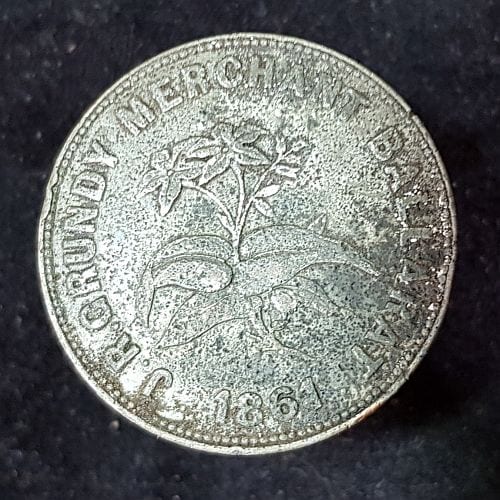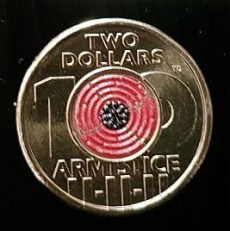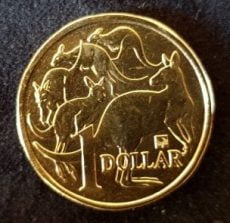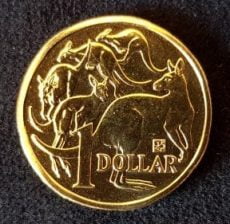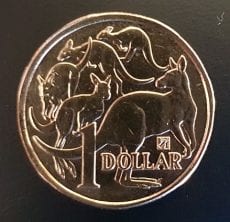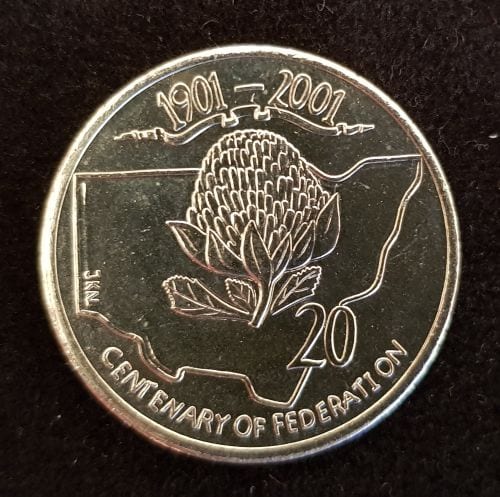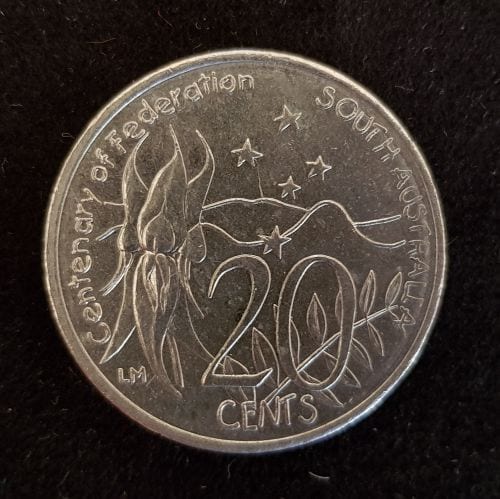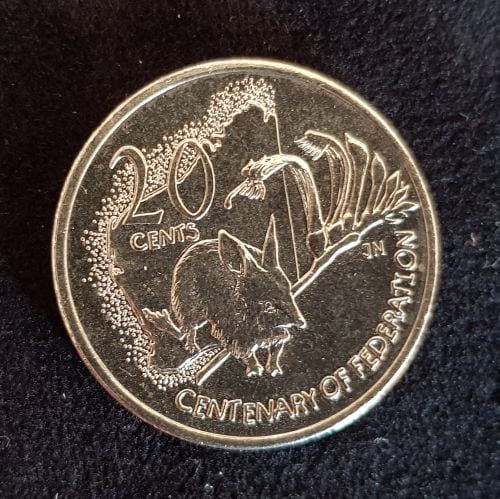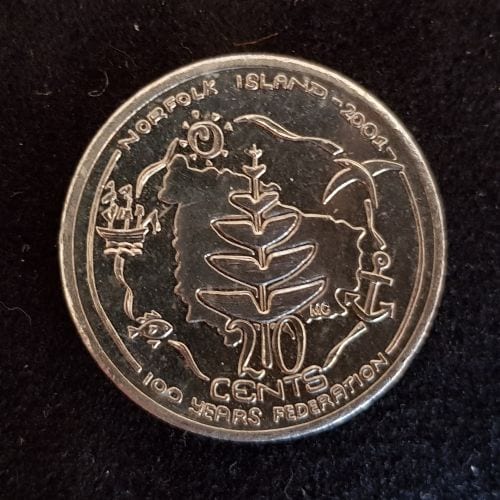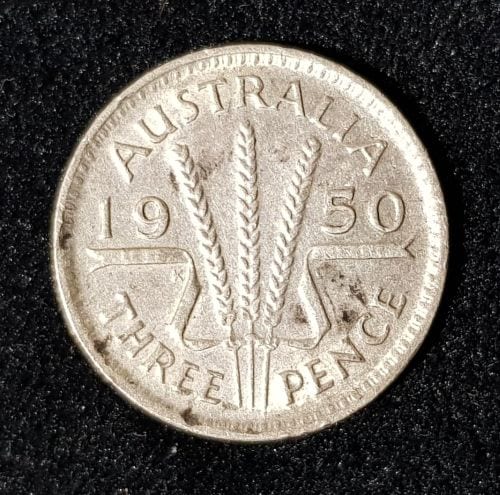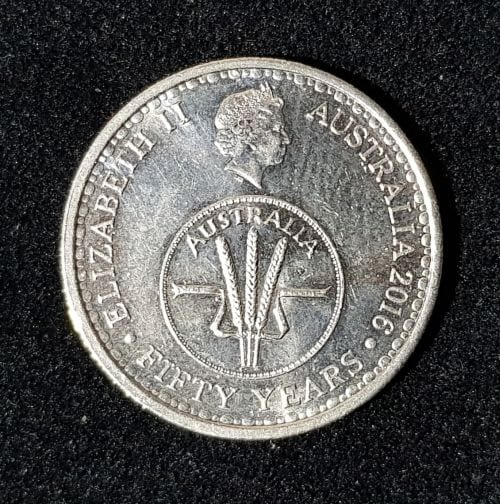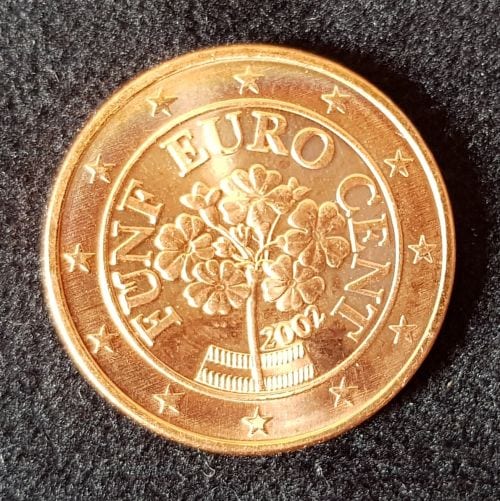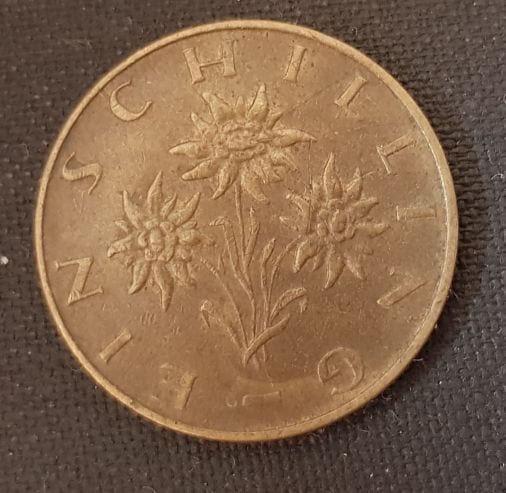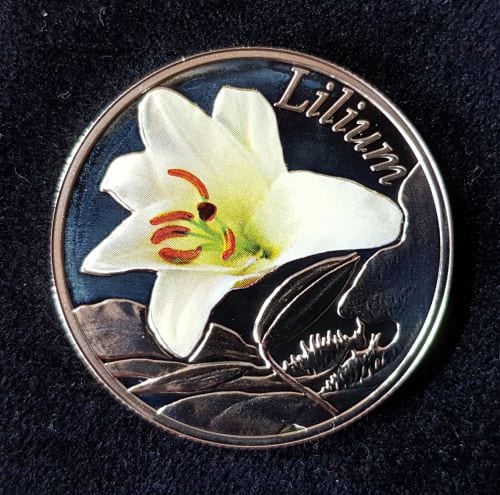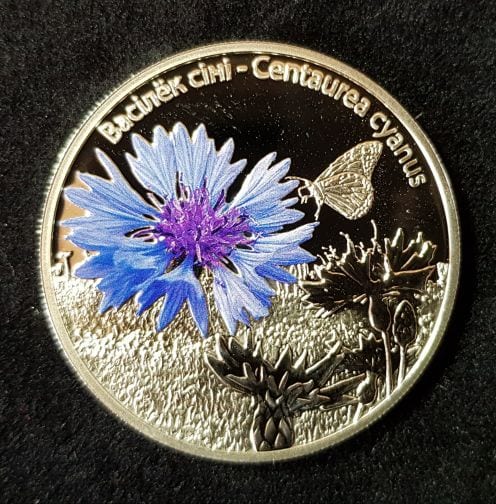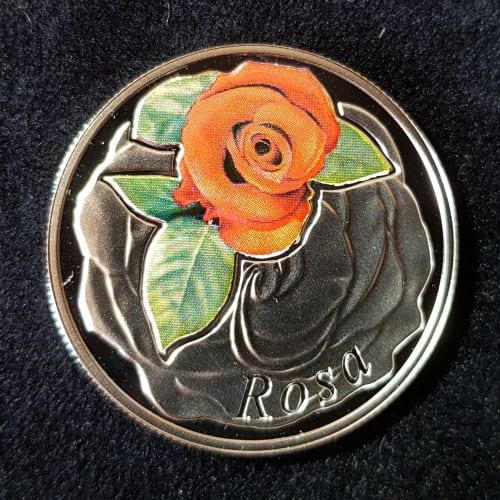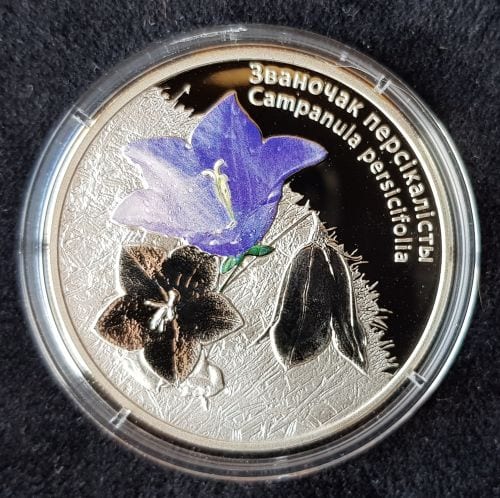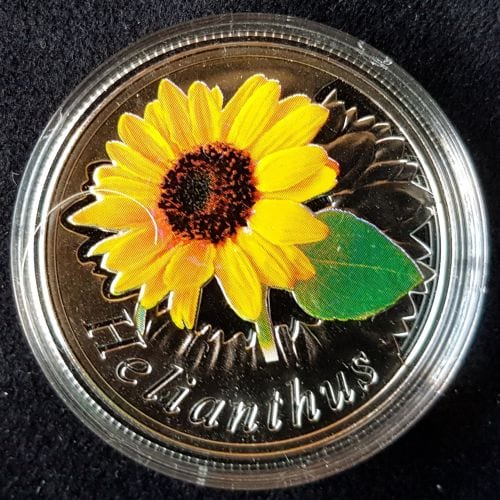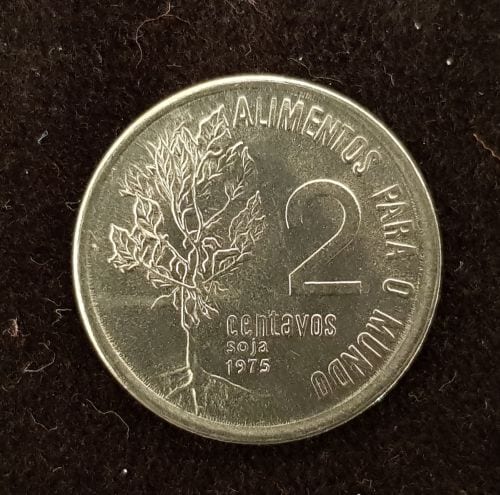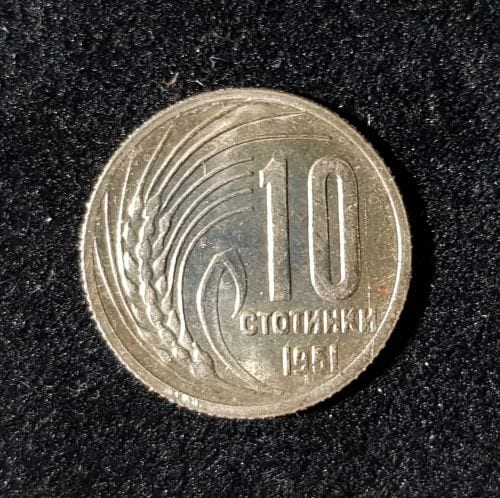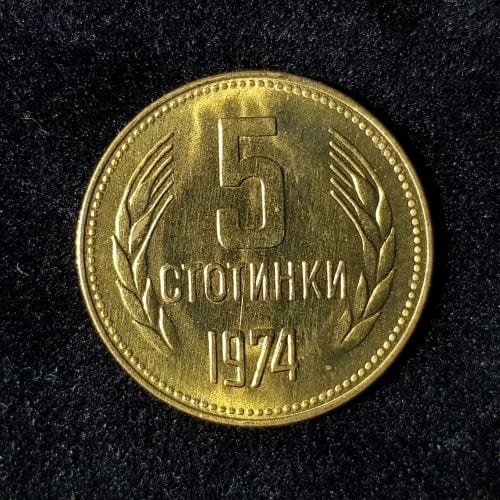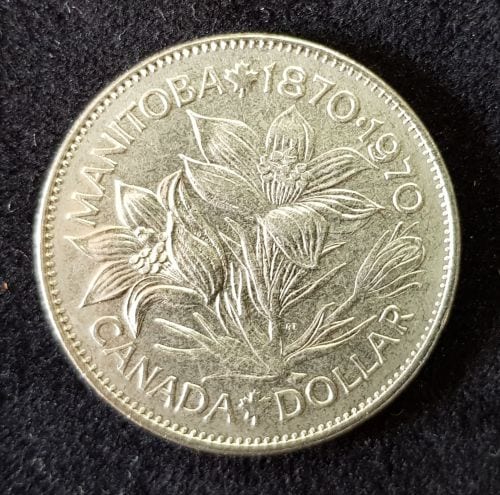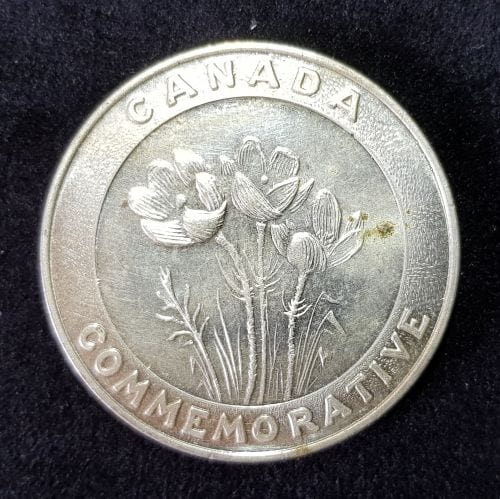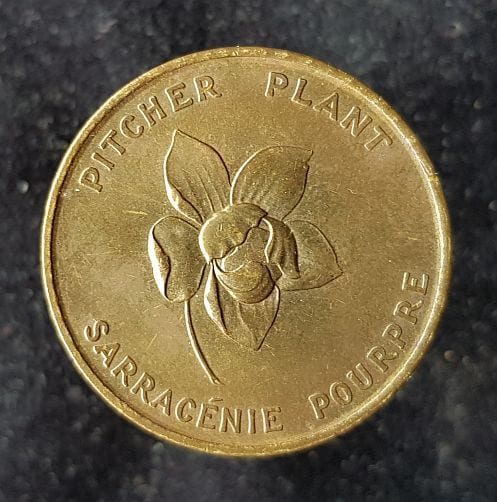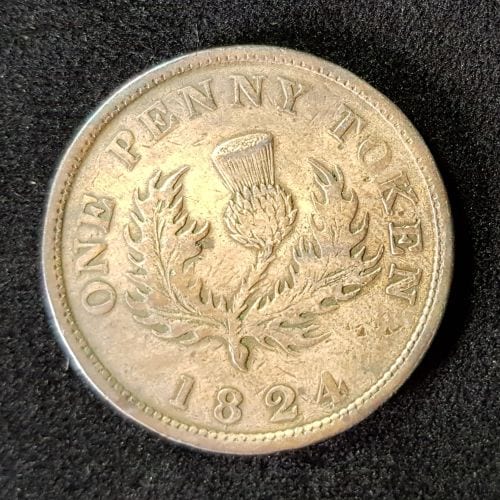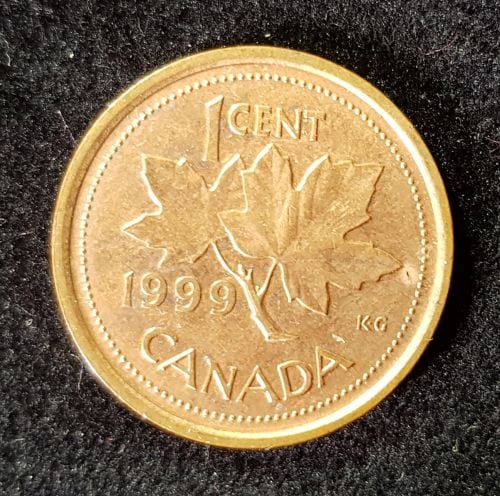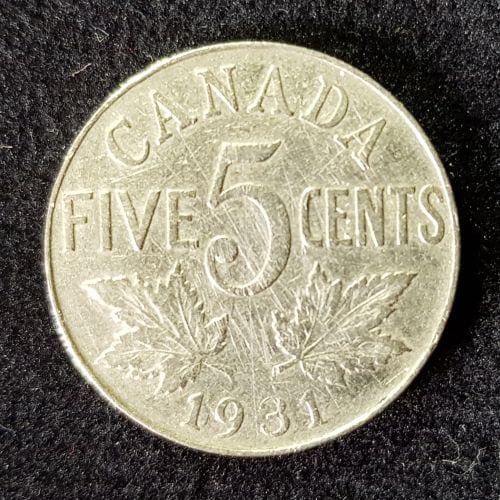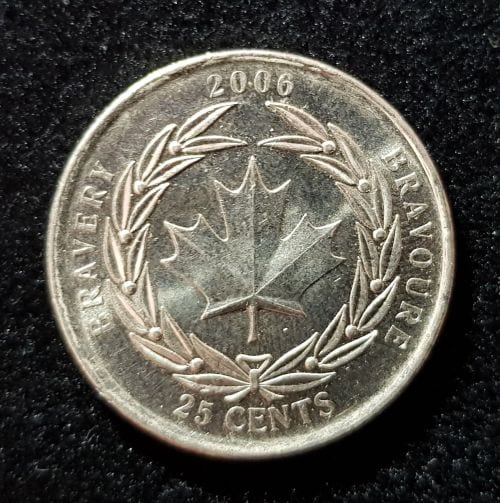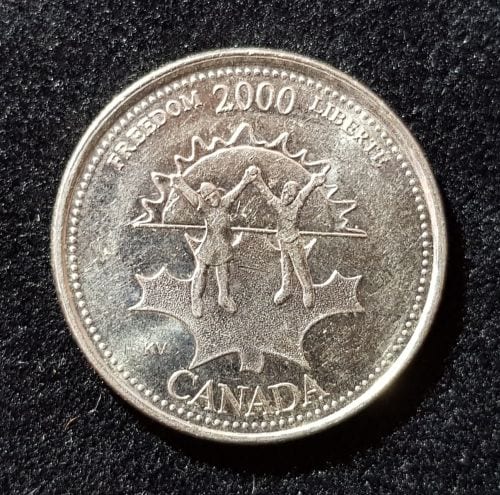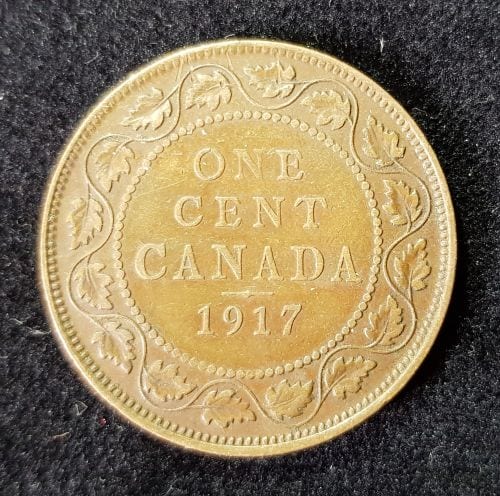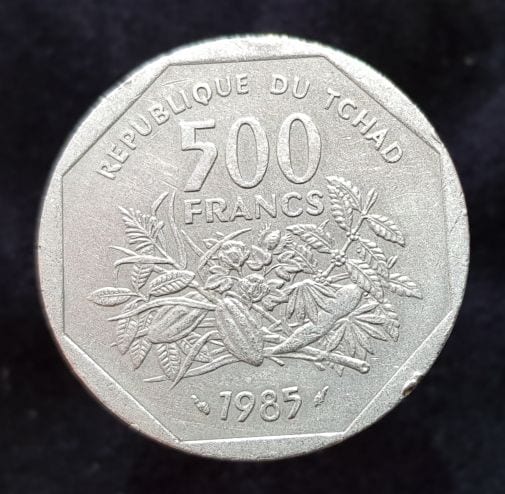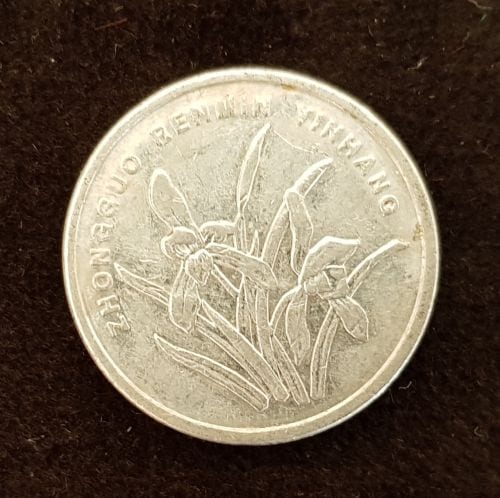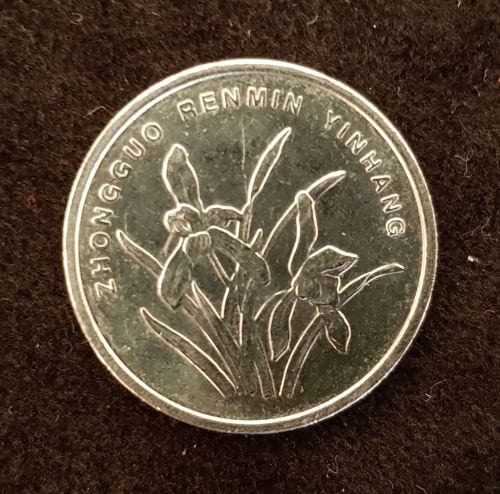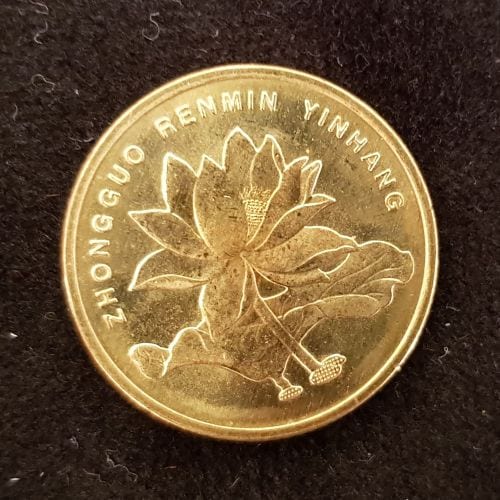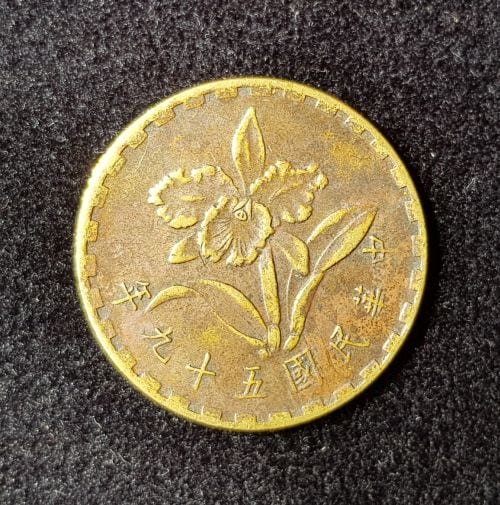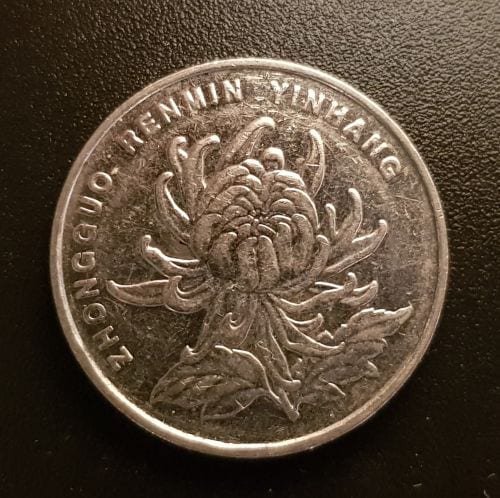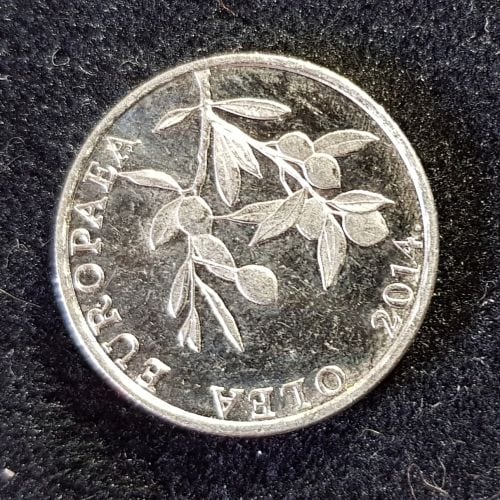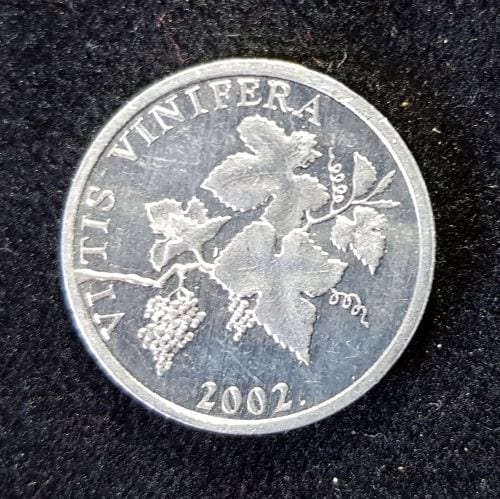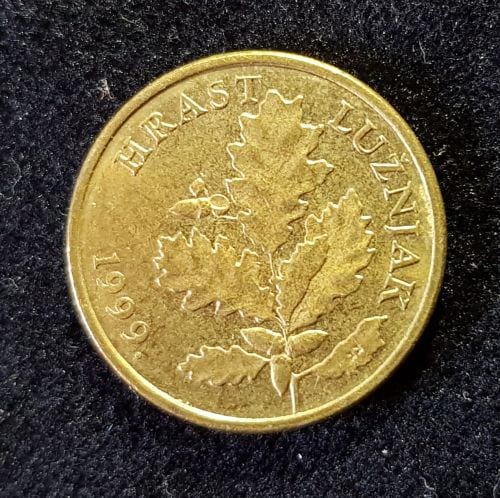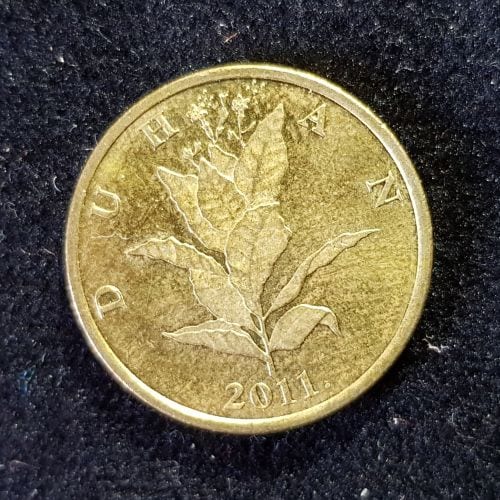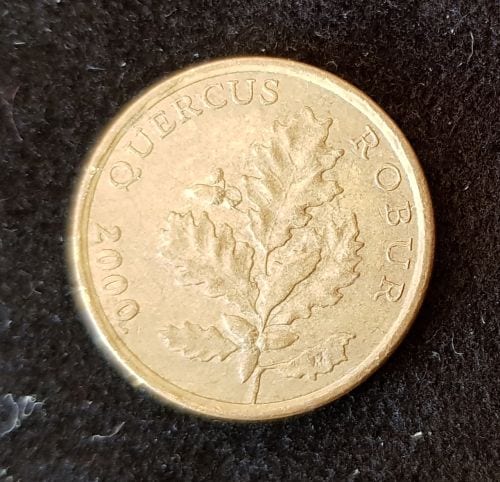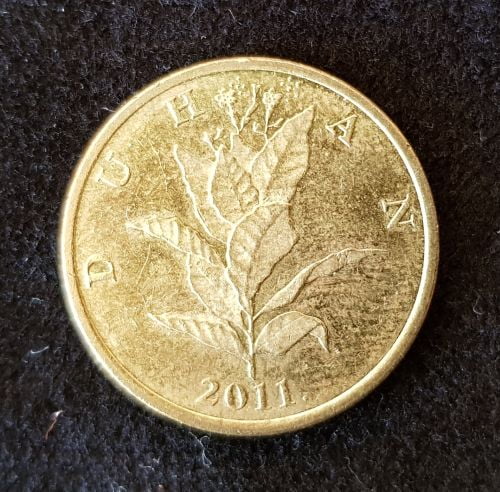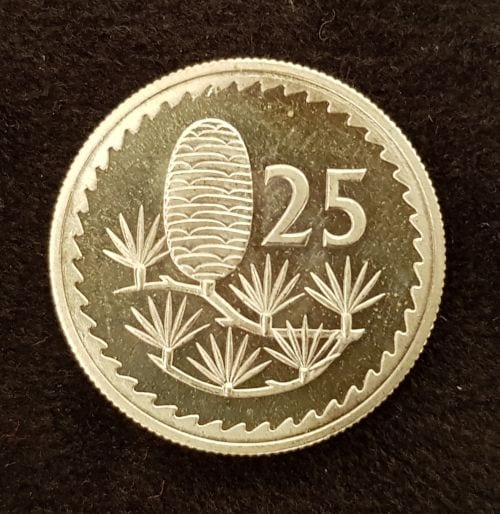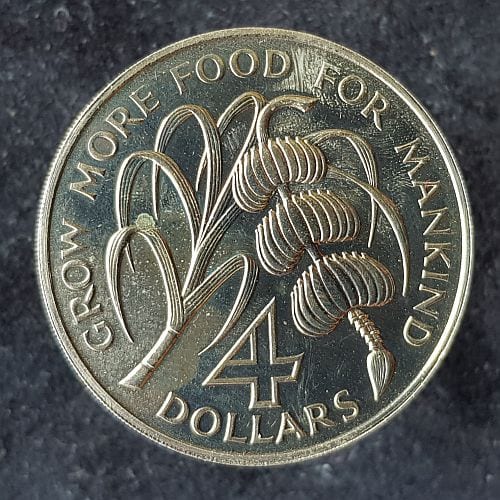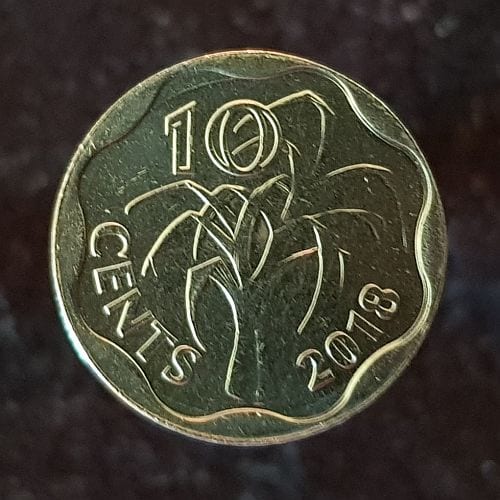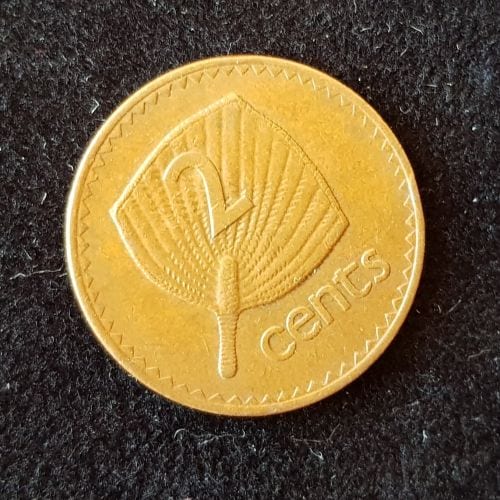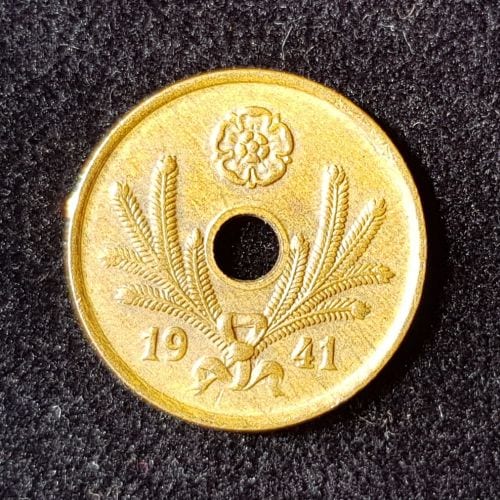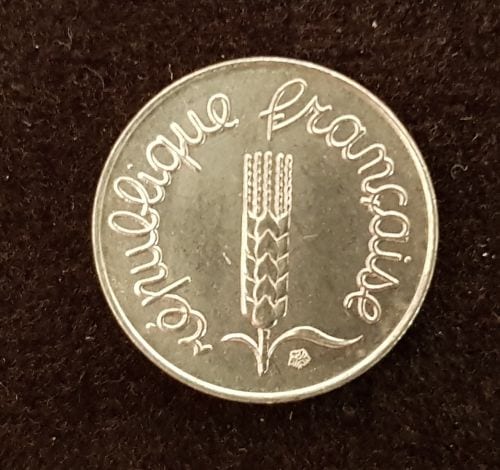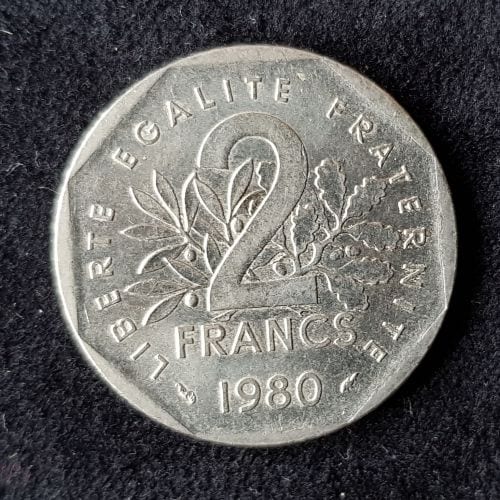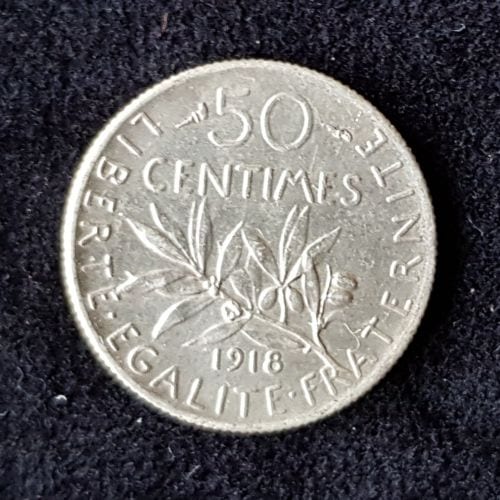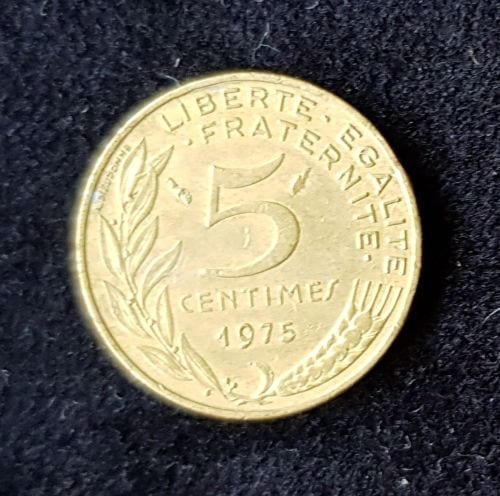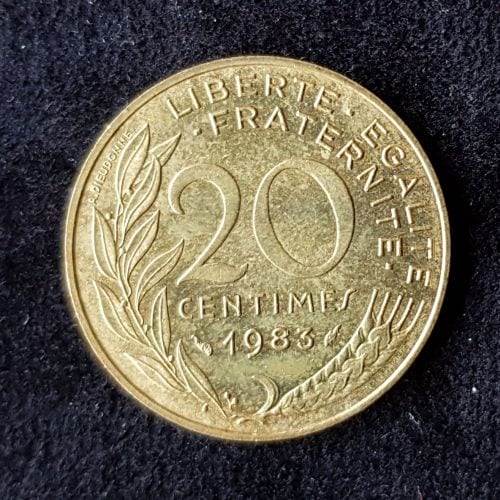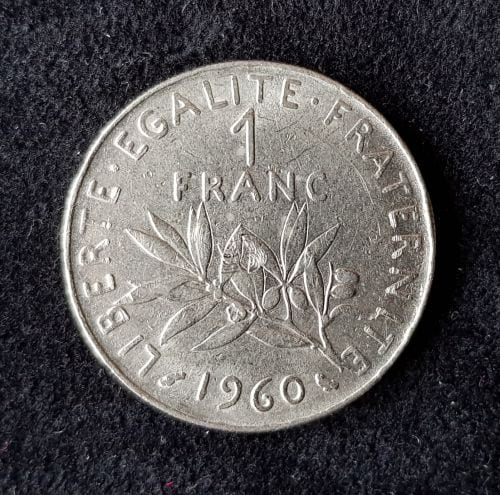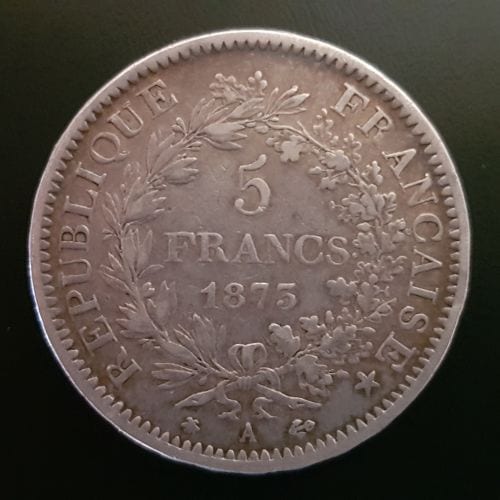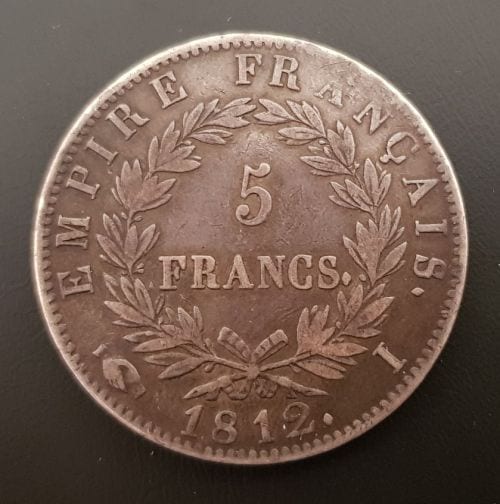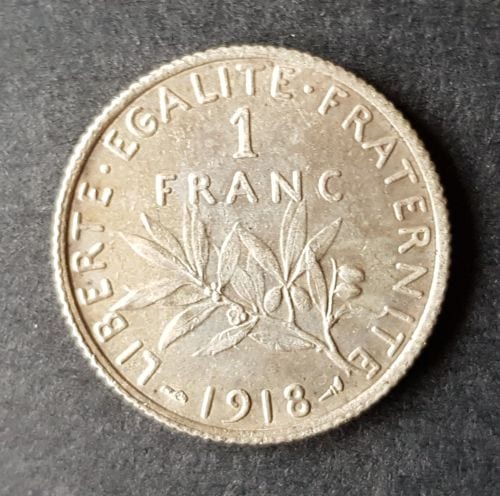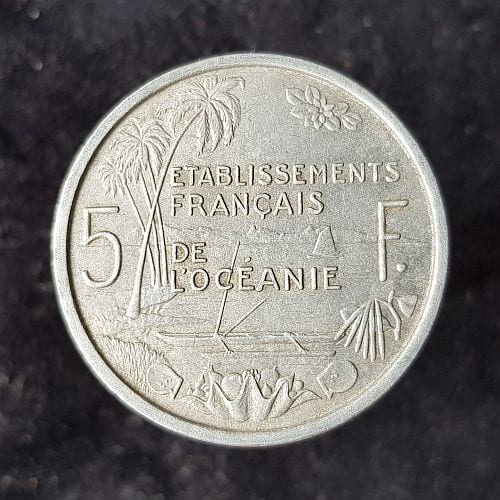
Coin Gallery A-E
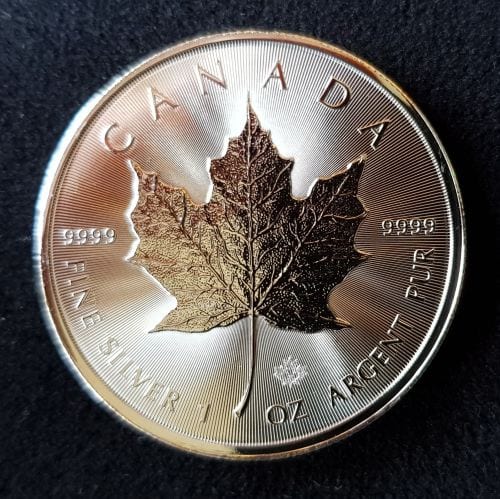
Coins, banknotes and postage stamps are products of Industria (complex industrial market societies). As we move into the new era of Informatia these being replaced by, plastic debit cards, electronic fund transfer, and bitcoin as we engage more deeply with the virtual dimension. The value of physical connections with the past will undoubtedly increase in the future because they provide a simple tangible window into the historical world of not only political, social, and cultural history, but geography, art, and technological change.
The following gallery of coin images gathers in one place the plant iconography of world coins over the last 2500 years. For added historical context I have given an introductory summary history for each country with comments on coinage. This information is often adapted from that given in Krause’s Standard Catalogue of World Coins.
The goal is to interpret changing human historical attitudes to plants over two and a half millennia through the medium of coin iconography.
The selection of coins presented here are, unless otherwise stated, those in my own numismatic collection. Unsurprisingly there is a lack of gold coins and expensive sets although I have endeavoured to refer to these in the text. Tokens are included where possible as they were often produced by established mints and carried depictions of plants e.g. the early colonial tokens of Australia and Canada.
I have concentrated on coins showing plants as specimen, where the plant is important as well as its decorative value – in wreaths etc. Inevitably the majority of plant images are emblems of various kinds rather than botanical or horticultural specimens.
I have also tried to include as many as possible of the world’s 195 sovereign countries that have released coins bearing specimen plants but, needless to say, it is incomplete.
Coins in the galleries are presented in alphabetical order of country and, mostly, chronological order from left to right and row to row.
Numismatics
Though historical interest is paramount, the numismatist is always concerned with value because building up a collection can be expensive, although prices paid for coins are mostly around half that listed in catalogues.
The coin captions containing numismatic information presented in the following order (as known):
Plant common name/plant scientific name/monarch/denomination/year/mint & number struck/metal/weight/diameter/width/grade/value/designer/reference
Historically it has often been the intention of a country to maintain parity between the face value of the coin and the value of the metal it contains, hence the coin denominations ascending in value from copper/bronze, to silver, to gold: but all great civilisations have resorted to ‘debasement’ in hard times and in our day coins have little metallic value so our money, both coins and notes, are ‘fiat money’ – money whose value is based on trust rather than the value of the object itself.
For collectors and investors, coins with metal content approaching face value have value for the metal alone and many people treat these as bullion, stacking them away as a form of investment. So, for example, British pennies and halfpennies originally minted in copper were, after 1860, minted in bronze. Pre-1919 British silver coins were made of sterling silver which was 92.5% pure silver: from 1919 to 1947 50% silver: then from 1947 the alloy cupronickel. American silver coins up to 1964 were 90% silver.
Today some mints deliberately strike bullion coins which they sell at a premium over the spot metal price on the markets as a means of making revenue. One well-known example is the Royal Canadian Mint’s Silver 1 oz Maple Leaf coin that is 99.9999 pure silver, the purest government-backed silver coins in the world. coin catalogues (and the captions here) express silver content using a decimal point e.g. .925, .8, .5 etc.
For the coin collector obviously scarcity and interest play a major role in a coin’s additional numismatic value but, even more important than this is the physical condition of the coin itself. Even common coins can be worth a lot of money if they have not been in circulation.
Countries have different ways of ‘grading’ coins but the system described below is the most familiar and is the one used in the gallery captions. The value of a coin is related directly to its grading as given in coin catalogues. Inevitably there is a degree of subjectivity in the grading process.
F (Fine) – quite a lot of wear, but all the main features, most of its design, its date and lettering is still clearly readable.
VF (Very fine) – some wear but only to its higher points. Main designs visible. Relatively little circulation.
EF (Extremely fine) – very little wear, just faint at higher points and only visible on close inspection.
Unc. (Uncirculated) – No wear at all. Looks as it did when it left the mint with all the details intact.
There are various ways of indicating intermediate conditions, so if a coin is graded between VF and EF it might be shown the following ways: VF+, gVF, or VF/EF. aVF indicates that the coin is almost/about VF. There are other conventions: BU – Brilliant Uncirculated = uncirculated and with the original mint lustre (shine & colour).
Proof coins are early samples of a coin issue used to test the newly polished dies and for the production of archive coins: nowadays they are often struck in greater numbers for the numismatic market and can usually be distinguished from normal circulation coins by their sharper rims, designs and polished backgrounds.
In recent times there has been a trend towards simple and stylized graphic design with a cameo finish – where the relief (raised or recessed) features a frosted finish and the field (background) is mirror-like, or vice-versa. Cameo is usually seen on proof coinage. In 2006, the United States Mint issued the first ‘reverse proof’ coin, a variant of the American Silver Eagle, in which the relief is mirror-like and the field frosted.
ARGENTINA
Mints: A = Korea B = Great Britain BA = Buenos Aires C = France
Currency: 100 Centavos = 1 Peso 10 Pesos = 1 Argentino (Commencing 1970) 100 Old Pesos = 1 New Peso (Commencing June 1983) 10,000 New Pesos = 1 Peso Argentino 1,000 Pesos Argentino = 1 Austral (Commencing 1985) 1,000 Pesos Argentinos = 1 Austral 100 Centavos = 1 Austral (Commencing 1992) 100 Centavos = 1 Peso
The Argentinian Republic has a population of around 37.03 million, capital: Buenos Aires. The fertile pampas of C Argentina is used for agriculture and grazing with the economy built around meat, flour milling, textiles, sugar refining, and dairy products. Oil occurs in Patagonia. Argentina was first observed by Europeans in 1516, by Spanish navigator Juan de Solis and a permanent Spanish colony was established at Buenos Aires in 1580. When Napoleon conquered Spain, Argentinians established an independent government on 25 May 1810 with independence formally declared on 9 July 1816. Local autonomy led to a federal union whose states and provinces produced a diverse coinage from 1817 to 1867. In the early days of independence a provisional national coinage was established, mostly of crown silver with supplemental minor denominations.
Jacaranda mimosifoliaJacaranda
1 PESO – 2017 Cu clad steel 4.3g/20m/1.7mm plain 149,387,100 aUnc – $2
Jacaranda, Tarco Jacaranda mimosifolia (1 peso) in the family Bignoniaceae, is Native to the South Yungas, Jacaranda is grown through the province of Buenos Aires as a decorative tree for parks and streets for its lilac-blue flowes. In its natural habitat it occurs abundantly in the Phytogeographic District of Selva Pedemontanas. In the Autonomous City of Buenos Aires, there are more than 11,000 Jacaranda trees (City Linear Public Forest Census, 2010) mostly introduced into the urban landscape by Carlos Thays, landscape architect.
Silk Floss Tree, Palo Borracho, Samohú, Ceiba insignis (Chorisia speciosa), (2 pesos) family Bombacaceae grows in Brazil, Paraguay and NE Argentina. It has remarkable pink or white flowers appearing from late summer to late fall. It has a curiously shaped trunk with large thorns. The fruits open to release seeds wrapped in a white snowflake that carries them through the air. In Buenos Aires the specimens of the Barranco de la Plaza San Martín are very colorful, they are also found in abundance in the forests of Palermo and in many parks, plazas, and sidewalks.
Arrayán, Quetri, Cuthu, Luma apiculate (5 pesos) in the family Myrtaceae, grows in sub-Antarctic forests in the provinces of Neuquén, Río Negro and Chubut by rivers and on the shores of lakes. To see it in its natural habitat, visit the Los Arrayanes National Park, south of the province of Neuquén, which has the forest with the highest density of arrayanes in the country.
Caldén, Prosopis caldenia, in the family Fabaceae, is endemic to Argentina, growing in the center of the country, especially in La Pampa where its outline is the provincial emblem. It also grows in San Luis, Córdoba, Mendoza, and southwest of Buenos Aires. To see it in its natural habitat, you can visit the Lihué Calel National Park.
Janson, H.C. (Chulca Impresora) La Moneda Circulatore En El Territorio Argentino
ARMENIA
Mints: Revan, (Erevan, now Yerevan)
Currency: 100 Luma = 1 Dram
The Republic of Armenia (formerly Armenian S.S.R) borders Georgia, Azerbaijan, S & W Turkey, and Iran, population 3.66 million, capital Yerevan. The economy is based on agriculture including cotton, vineyards and orchards, hydroelectricity, chemicals – primarily synthetic rubber and fertilizers, vast mineral deposits of copper, zinc and aluminum, together with the production of steel and paper. Russia occupied Armenia in 1801 until the Russo-Turkish war of 1878 although the Armenians remained more loyal to the Ottoman Turks. In 1894, fearing revolution, the Ottoman Turks sent in an expeditionary force of Kurds. In WW I there was an occupation by Russian forces in 1916. After the Russian revolution the Georgians, Armenians and Azerbaijanis formed the short-lived Transcaucasian Federal Republic on Sept. 20, 1917, which broke up into three independent republics on26 May 1918. In 1920 the Turks attacked the communist Armenian Republic and Russia followed ousting the Turks so that on 29 Nov. 1920 Armenia was proclaimed a Soviet Socialist Republic. In 1922, Armenia, Georgia and Azerbaijan formed the Transcaucasian Soviet Federated Socialist Republic which became part of U.S.S.R. in 1936. The federation was dissolved and Armenia became a member Republic of the U.S.S.R. and a new constitution was adopted in 1978, elections occurring in 1990. The Supreme Soviet declared Armenian sovereignty in 1991, unite Armenia with Nagorno – Karabakh to create a fully independent Republic of Armenia in Sept. 1991. Fighting between Christians in Armenia and Muslim forces of Azerbaijan escalated in 1992 and continued into 1994.
Quercus araxina, Aleppo Oak, is a rare species dominant in the arid open oak forests of South Armenia (Zangezur and Meghri floristic regions): it was included in the first edition of the Red Data Book of Armenia as Quercus infectoria subsp. boissieri.
Platanus orientalis, Oriental Plane. Unfortunately, though P. orientalis occurs naturally in the region, the form of the leaves and the presence of only two fruit ‘bobbles’ suggest that this is in fact Platanus x acerifolia,
AUSTRALIA
Mints: Melbourne (M), Perth (P), Sydney (S) – Royal Australian Mint.
Currency: Any available currency until Proclamation in 1800 then pounds, shillings, and pence. Decimalization introduced in 1966 as 100 cents = 1 dollar.
Ruler: Britain until 1942
Australia is ‘the largest island and the smallest continent in the world’, lying south of Indonesia between the Indian and Pacific Oceans. Population 24.6 million in 2017, capital Canberra. The economy depends on mineral deposits including iron ore, coal, gold, silver, nickel, uranium, lead and zinc but also on Agriculture, raising livestock, mining and manufacturing. Chief exports are wool, meat, wheat, iron ore, coal and nonferrous metals. Home market grading of Australian coinage is generally stricter than USA practiced standards.
Australia was a founding member of the Commonwealth of Nations that replaced the British empire in 1942. Elizabeth II is the Head of State as Queen of Australia; the Prime Minister is Head of Government. Home market grading of Australian coinage is generally stricter than USA practiced standards.
Telopea speciosissima – Waratah
Waratah $1 – 2019 Floral Emblem Series – New South Wales Mintage: S 3000 AlBr/9g/25mm/Unc Rev: S Devlin Obv: J Clark
Dendrobium bigibbumCooktown Orchid
Floral Emblem Series – Queensland $1 – 2019 Mintage: S 3000 AlBr/9g/25mm/Unc Rev: S Devlin Obv: J Clark
Anigosanthos manglesiiRed & Green Kangaroo Paw
Kangaroo Paw Floral Emblem Series – Western Australia $1 – 2019 Mintage: S 3000 AlBr/9g/25mm/Unc Rev: S Devlin Obv: J Clark
Epacris impressaCommon Heath
Floral Emblem Series – Victoria $1 – 2019 Mintage: S 3000 AlBr/9g/25mm/Unc Rev: S Devlin Obv: J Clark
Telopea speciosissima Waratah
Centenary of Federation Emblem of NSW Elizabeth II – 20c – 2001 CuNi 11.31g/28.52mm/2.5mm 2,400,000 Unc $6
Swainsona formosa Sturt’s Desert Pea
Centenary of Federation Emblem of South Australia Elizabeth II – 20c – 2001 CuNi 11.31g/28.52mm/2.5mm 2,400,000 Unc $6
Anigosanthos manglesii Mangles’s Kangaroo Paw
Centenary of Federation Emblem of Western Australia Elizabeth II – 20c – 2001 CuNi 11.31g/28.52mm/2.5mm 2,400,000 Unc $6
Araucaria heterophylla Norfolk Island Pine
Centenary of Federation Emblem of Norfolk Island Elizabeth II – 20c – 2001 CuNi 11.31g/28.52mm/2.5mm 2,400,000 Unc $6
(a) Grundy was an Englishman from near London who arrived in Melbourne on Ben Nevis in January 1855. In 1856 he opened a tobacconist’s shop in Main Road Ballarat, ‘. . . the principal tobacconist in the town.’ He lost his shop in 1872 after speculating heavily and then moved to Melbourne where he sold ‘colonial cigars’. Two versions of his penny tokens, both struck by Ralph Heaton and Sons of Birmingham England, were issued in 1861 one with the spelling ‘Ballaarat’ (the older style) in the legend and the other ‘Ballarat’ (today’s spelling). The Birmingham Mint of Ralph Heaton started producing tokens and coins in 1850 using second-hand coin presses bought at an 1850 auction of the defunct Soho Mint estate of Matthew Boulton which dated back to 1788. . . . Boulton had minted the famous ‘cartwheel’ pennies and twopences used in Australia. Heaton’s first productions were the Australian token coins. The machines comprised four steam-powered screw presses and six planchet presses for making blanks from strip metal. It was an independent private enterprise that proceeded with the co-operation of the Royal Mint. During the peak of operation the four original Boulton screw presses were striking about 110,000 coins per day. As overseas orders increased, particularly for India, the Mint added a new lever press and further equipment. Completed in 1862 it employed 300 staff and was at this time the largest private mint in the world.[1][2] The first issue from the mint was the 1851 Annand Smith (Sydney, New South Wales) penny token.
AUSTRIA
Mints:
Currency: Austro-Hungarian reform coinage 100 Heller = 1 Corona
Republic of Austria 100 Groschen – 1 Schilling
Rulers: Franz Joseph I, 1848-1916 Karl I, 1916-1918
The Republic of Austria is a parliamentary democracy in mountainous central Europe with a population of 8.08 million, capital Wien (Vienna). Industrial exports include machinery, iron, steel, textiles, yarns and timber. Former tribal, mostly Celtic, Austria was occupied by Romans and afterwards a margravate of Charlemagne’s Empire with Premysl II of Otakar, King of Bohemia gaining possession in 1252 followed by Rudolf of Habsburg in 1276 in a dynasty that ruled until World War I. In 17th century, Austrian coinage reflected three wars. From 1618-1648, the Thirty Years’ War between northern Protestants and southern Catholics produced low quality, “kipperwhipper” strikes of 12, 24, 30, 60, 75 and 150 Kreuzer. During the Austrian-Turkish War of 1660-1664 coins were struck to maintain soldier’s salaries and between 1683 and 1699 in second Austro-Turkish conflict there were new issues of 3, 6 and 15 Kreuzers to cut war costs. During World War I, the Austro-Hungarian Empire was one of the Central Powers with Germany, Bulgaria and Turkey. After the war the Empire was disbanded and Austria became an independent republic occupied in WWII in April 1945 when divided into 4 occupation zones until on May 15, 1955 Austria was recognized as a sovereign independent democratic state.
During the German occupation (1938-1945), the German Reichsmark coins and banknotes were circulated.
BANGLADESH
Mints:
Currency: 100 Poisha = 1 Taka
Ruler: Britain until 1947; Pakistan until 1971
The Peoples Republic of Bangladesh (formerly East Pakistan) is a parliamentary democracy located on the Bay of Bengal bordered by India and Myanmar with a population of 128.1 million, capital Dhaka. The agricultural economy exports jute and tea. Bangladesh was formed at the end of British rule in 1947 and partition into India and Pakistan. East and West Pakistan were united by religion but separated by culture and 1,000 miles of Indian land. East Pakistanis unsuccessfully demanded greater economic benefits and political reforms until the general elections of 1970 precipitated an insurrection such that East Pakistan seceded from West Pakistan 26 March 1971 and with the support of India declared an independent Peoples Republic of Bangladesh which is a member of the Commonwealth of Nations.
BELARUS
Mints:
Currency: 100 Kapeek = 1 Rouble
Rulers
Belarus (White Russia- formerly the Belorussian S.S.R.) lies along the western Dvina and Dnieper Rivers, bounded to the west by Poland, to the north by Latvia and Lithuania, to the east by Russia and the south by the Ukraine. Population 4.8 million, capital Minsk. Econom based on peat, salt, and agricultural products including flax, fodder and grasses for cattle breeding and dairy products.
In the upper part of the obverse is the coat of arms of the issuer. On the outer ring the inscription РЭСПУБЛIКА БЕЛАРУСЬ (the Republic of Belarus). At the bottom, also on the outer ring: the face value 10 РУБЛЁЎ (10 or 20 rubles), the year of issue (2013, 2014), the mint mark and hallmark (Ag 925). Details of individual coins are available from National Bank of the Republic of Belarus www.nbrb.by and the Mint of Poland.
BRAZIL
Mints: (a) – Paris, privy marks only A – Berlin 1913 B – Bahia
Currency: 1833-1942 1000 Reis = 1 Mil Reis: 1942-1967 100 Centavos = 1 Cruzeiro
The Federative Republic of Brazil, almost half of South America, has Portuguese heritage (claimed by Admiral Pedro Alvares Cabral in 1500) and a population of 169.2 million, capital Brasilia. The economy is diverse with many mineral resources but mostly agricultural though only 4 percent of the area is under cultivation. Exports are coffee, cotton, iron ore and cocoa. Settlement occurred in 1532, proclaimed a royal colony in 1549. During the Napoleonic Wars, Dom Joao VI established Portuguese government in Rio de Janeiro . his son Dom Pedro I declaring Brazil’s independence on 7 Sept. 1822 and himself emperor. The Empire of Brazil was maintained until 1889 when the federal republic was established , persisting until the Federative Republic was established in 1946. Following a coup in 1964 the armed forces retained overall control under a dictatorship until civilian government was restored on 15 March
BULGARIA
Mints: A – Berlin (a) Cornucopia & torch – Paris BP – Budapest H – Heaton Mint, Birmingham KB – Kormoczbanya (p) Poissy – Thunderbolt
Currency: 100 Stotinki = 1 Lev Rouble
The Republic of Bulgaria (formerly Peoples Republic of Bulgaria) is a Balkan country on the Black Sea in SE Europe with a population of 8.31 million, capital Sofia. Economy based on agriculture but also heavy industry with exports of machinery, tobacco and cigarettes, wines and spirits, clothing and metals. The Bulgars, an Asiatic tribe, occupied the region in the 7th century, forming kingdoms until falling under Turkish rule in 1395, in 1878 becoming a principality under Turkish suzerainty and by 1885 the borders approximated those of today. A Bulgarian kingdom independent of Turkey was proclaimed 22 Sept. 1908. During WWI Bulgaria aligned with Germany and after the war ceded land to Greece and Romania. In 1934 King Boris III suspended all political parties and established a dictatorial monarchy. In WW II Bulgaria supported Germany but protected the Jewish community. In 1943 the country was ruled by a pro-Nazi regency until liberated by Soviet forces in 1944 when the monarchy was abolished and in 1946 became a Soviet-style Peoples Republic. After democratic reforms in 1989 the name was changed to the Republic of Bulgaria.
Coinage of the Peoples Republic features a number of politically oriented commemoratives. RULERS Ferdinand I, as Prince, 1887-1908 As King, 1908-1918 Boris III, 1918-1943
CANADA
Mints: In the early years, Canada’s coins were struck in England at the Royal Mint in London or at the Heaton Mint in Birmingham. Issues struck at the Royal Mint do not bear a mint mark, but those produced by Heaton carry an “H”. All Canadian coins have been struck since January 2, 1908, at the Royal Canadian Mints at Ottawa and recently at Winnipeg except for some 1968 pure nickel dimes struck at the U.S. Mint in Philadelphia: they do not bear mint marks. Ottawa’s mint mark (C) does not appear on some 20th Century Newfoundland issues, however, as it does on English type sovereigns struck there from 1908 through 1918.
Currency: 1 Dollar = 100 Cents
Ruler: British 1763
Canada faces both the Atlantic to Pacific oceans with a population of 30.29 million, capital: Ottawa. Frenchman Jacques Cartier claimed today’s Canada for France in 1534 it remaining a French colony although the British settled in the coastal south Battles between the countries resulted in Britain acquiring Hudson Bay, Newfoundland and Nova Scotia and the rest New France in in 1763 in the Victory of James Wolfe over Montcalm near Quebec in 1759. During the American Revolution Canada was a refuge for American Royalists, many settling in Ontario. In 1791 the Constitutional act divided Canada into two at the Ottawa River, each with its own government: Upper Canada, chiefly English (southern section of Ontario) and Lower Canada chiefly French (southern Quebec). With insurrections in both sections the British passed the Union Act on 23 July 1840 uniting Lower and Upper Canada (as Canada East and Canada West) to form the Province of Canada. The British North American Act of 1867 established Canada as the first federal union in the British Empire. At first it had four provinces: Ontario, Quebec, Nova Scotia, and New Brunswick. The Hudson Bay Company’s territories were acquired in 1869 which gave rise to Manitoba, Saskatchewan and Alberta. British Columbia joined in 1871 and Prince Edward Island in 1873. Canada took over the Arctic Archipelago in 1895. In 1949 Newfoundland joined the confederation.
Canada is a member of the Commonwealth of Nations. Elizabeth II is Head of State as Queen of Canada.
As in Australia, Britain’s Canadian colonies used many currencies including British pounds, American dollars, Spanish pesos, and unique colonial currencies (tokens) made by local Banks and governments. In 1867 the unified Canadian government gained power over currency and in 1870 the Dominion Notes Act (Currency Act) made the Canadian Dollar ($) the official currency of Canada, at first tied to the value of the British pound then the price of gold. Since 1931 the Canadian dollar has been a ‘floating’ currency with a value determined by the international marketplace.
From the dominion coin issue of 1870 silver coins were .925 until 1919 when they became 0.50 and in 1968 nickel.
Canada has a national bank, the Bank of Canada with the power to both print and buy currency in order to help control the currency’s value Coins are produced by the Royal Canadian Mint which produces ‘special edition’ coins in various denominations and designs, including high value bullion coins of pure gold, silver, and platinum and crowd pleasers in colour, are luminous, or reflect current figures in entertainment.
Nova Scotia (New Scotland) was a maritime province of Canada joined to the mainland by the isthmus of Chignecto. Possibly visited by Vikings in the 11th century and inhabited by Micmacs prior to Europeans. Joined confederation in 1867. Contested by French and English.
Newfoundland with Labrador became a maritime province of Canada. Inhabited in prehistory and briefly visited by Vikings but officially discovered by Europeans in 1497 by Italian John Cabot. Contested by French and English into the 19th century with French settling west coast and English the east. Treaty of Utrecht ceded the island to England but French given fishing rights.
Pulsatilla ludoviciana Prairie Crocus
Centennial (1870 – 1970) Manitoba – $1 – 1970 Ni 15.62g/32.13mm 4,140,058 – Royal Canadian Mint Engraver: Raymond Taylor KM#78, Schön#74 – Unc – $4.50
Acer rubrum Canadian Maple
Elizabeth II – $5 – 2020 Bullion Coin Ag .9999/1oz/38mm Brilliant uncirculated – $40
Sarracenia purpurea Pitcher Plant
Newfoundland George VI – 1 cent – 1941 C Bro/3.2g/19mm 827,662 KM# 18 VF+ $5
Acer rubrumCanadian Maple
Elizabeth II – 1 cent -1999 Cu plated steel 2.25g/19.05mm 1,089,625,000 KM# 289 – EF+ – $1
CHAD
Mint marks: (a) – Paris, privy marks only (b) = Brussels NI – Numismatic Italiana, Arezzo, Italy
Currency: Franc
The Republic of Chad (former French Equatorial Africa) in C Africa has a population of 7.27 million and capital N’Djamena. The economy is based on livestock (camels, cattle and sheep) with exports of cotton, ivory and palm oil are important exports. Possibly known to Ptolemy, first visited by white men in 1823, the territory divided by treaty between Great Britain, France and Germany (after WWI the German area was mandated to France in 1919). Chad was absorbed into the colony of French Equatorial Africa in 1910, becoming a separate colony in 1920. French Equatorial Africa was dissolved in 1959, the component states became autonomous members of the French Union. On 11 Aug. 1960 Chad became an independent republic. Early coinage is listed under French Equatorial Africa and the Equatorial African States, later coinage under the category Central African States.
MINT MARKS (a) – Paris, privy marks only (b) = Brussels NI – Numismatic Italiana, Arezzo, Italy
CHINA
Mints:
Currency: Most of these have been in dollar (yuan) denominations but tael denominations were issued in the 1920’s and before. The striking of coins was nearly halted from the late 1930’s to 1940’s due to war and inflation while vast amounts of paper currency were issued by the Nationalist, Communist and Japanese occupation institutions. Prior to 1889 Chinese government coinage was the copper-alloy cash coin. With occasional use of silver and gold. This was unsatisfactory for trade and large business transactions so private currency consisting of stamped silver ingots came into use, the sycee ingots. Examples are known from the Han dynasty (206 BC – 220 AD) but prior to the Sung era (960 – 1280 CE they were used mainly used as bullion. Commerce of the Sung dynasty required the use of silver or gold. By the Mongol period (1280-1368) silver ingots and paper money were the dominant currencies. The western explorers who traveled to China during this period (such as Marco Polo) mention both paper money and sycee but not cash coins. During the Ming dynasty (1368-1644) trade decreased but toward the end of that dynasty Dutch and British ships began a China trade and sycee returned. During the 19th and early 20th centuries, the trade in sycee was vast. Most of the sycee around today are from this period. In 1935 the Chinese government and in 1939 Sinkiang banned the use of sycee and it soon disappeared. The word sycee (pronounced “sigh – see”) is a western corruption of the Chinese word hsi-szu (“fine silk”) or hsi yin (“fine silver”) and is first known to have appeared in the English language in the late 1600’s. By the early 1700’s the word appeared regularly in the records of the British East India Company. Westerners also called these ingots “boat money” or “shoe money” as the most abundant ingot resembled a Chinese shoe. The ingots were cast in moulds the inscription impressed when near-liquid. Most are in near standard weights, the most common being 1, 5, 10 and 50 taels. Other weights known include 1/10, 1/5, 1/4, 1/3, 1/2, 2/3, 72/100 (this is the weight of a dollar), 3/4, 2, 3, 4, 6, 7, 8 and 25 taels. Most of the pieces weighing less than 5 taels were used as gifts or souvenirs. Weights and fineness of metal varied.
Ruler:
Imperial China was replaced in 1912 by a republic, then replaced by a communist government in 1949 including offshore islands in the South China Sea. Population about 1.19 billion people, capital Beijing. Admitted to the United Nations in 1971. Cast coins in base metals were used in China many centuries before the Christian era but locally struck coinages of the western type in gold, silver, copper and other metals did not appear until 1888. These modern coins have proliferated in Nationalist and Communist China, the prerevolutionary Imperial government and many provincial agencies.
Mayling Orchid (?Phragmipedium Mayling)
5 JIAO – 1970 (59) NiBra .70g/23mm/edge reeded 6,010,000 KM#546 – F+ – $3
COLOMBIA
Mints: Colombia, Slovakia
Currency: REPUBLIC DECIMAL COINAGE 100 Centavos = 1 Peso
Before 1880, 1 Peso = 10 Reales (Décimos) = 40 Cuartillos = 100 Centavos (Décimos de real) • Since 1880, 1 Peso = 100 Centavos • 1907-1916, 1 Peso = 100 Pesos papel moneda
The Republic of Colombia in NW South America has a population of c. 42.3 million, capital Bogota. The economy is agricultural with coffee the major crop. Colombia has the world’s greatest platinum deposits also substantial reserves of coal, iron ore, petroleum and limestone. Precious metals and emeralds are also mined. Coffee, crude oil, bananas, sugar, and emeralds are exported.
COSTA RICA
Mints:(CR) – San Jose 1825-1947 (P) – Philadelphia, 1905-1961 (L) – London, 1937, 1948
ISSUING BANK BCCR – Philadelphia 1951-1958,1961 BICR – Philadelphia 1935 BNCR – London 1937,1948 BNCR – San Jose 1942-1947 GCR – Philadelphia 1905-1908,1929 GCR – San Jose 1917-1941
MINT IDENTIFICATION Key Letter Mint (a) Armant Metalurgica, Santiago, Chile (c) Casa de Moneda, Mexico City Mint (cc) Casa de Moneda, Brazil (co) Colombia Republican Banko (g) Guatemala Mint (i) Italcambio Mint (p) or (P) Philadelphia Mint, USA (r) RCM Royal Canadian Mint (rm) Royal Mint, London (s) San Francisco (sj) San Jose (sm) Sherrit Mint, Toronto (v) Vereingte Deutsche Metallwerke, Karlsruhe (w) Westain, Toronto
ASSAYERS’ INITIALS CY – Carlos Yglesias, 1902 JCV – Jesus Cubrero Vargas, 1903 GCR – Gobierno de
Currency: 8 Reales = 1 Peso 16 Pesos = 8 Escudos = 1 Onza
Costa Rica is between Nicaragua and Panama with a population of 3.4 million, capital San Jose. Economy is based on agriculture, tourism, coffee, bananas, beef and sugar. Discovered by Christopher Columbus in 1502 and a colony of Spain from 1522 until independence in 1821. Established as a republic in 1848 with democratic reforms in the 1870’s and 80’s.
CROATIA
Mints:
Currency: 30 May 1994 – 1000 Dinara = 1 Kuna; 100 Lipa = 1 Kuna
Ruler:
The Republic of Croatia (Hrvatska) has Adriatic Sea to the Wes, Hungary to the north east and a population of 4.7 million, capital Zagreb. Annexed to Hungary until 1 Dec.1918 it is now aligned with Serbia and Slovenes to form the Kingdom of the Serbs, Croats and Slovenes, named the Kingdom of Yugoslavia on 3 Oct. 1929. Coin dates starting with 1994 are followed with a period e.g. 1994.
REPUBLIC REFORM COINAGE For the circulating minor coins, the reverse legend (name of item) is in Croatian for odd dated years and Latin for even dated years.
Olea europaea*Olive Branch
20 lipa – 2014 Ni on steel 2.5g/18.5mm 1000 KM# 17 – Pf65 – $6 • On legend
CYPRUS
Mints: No mint mark – Royal Mint, London, England H – Birmingham, England
Currency: 9 Piastres = 1 Shilling 20 Shillings = 1 Pound
Ruler:British, until 1960
The Mediterranean island of Cyprus is south of Turkey and 97 km off the Syrian coast with a population of 736,636, capital Nicosia. The economy is based on agriculture, light manufacturing and tourism with the exports citrus fruit, potatoes, footwear and clothing. A Bronze Age source of copper (hence its name) settled by Greeks. Conquered by many empires: Assyrian, Egyptian, Persian, Macedonian, Ptolemaic, Roman and Byzantine And seized from Isaac Comnenus by Richard the Lion-Heart in 1191, sold to the Templar Knights and for the following 7 centuries was ruled by the Franks, the Venetians and the Ottomans. During the Ottoman period Cyprus acquired its Turkish community (18 percent of its population). In 1878 the island was taken by Britain and made a crown colony in 1925, becoming an independent republicon 16 Aug. 1960. In 1964 ethnic Turks withdrew from the government and Turkish forces invaded in 1974 separating the Greek and Turkish communities. In 1983, Turkish Cypriots proclaimed their own state in northern Cyprus, which remains without international recognition. Cyprus is a member of the Commonwealth of Nations.
DOMINICA
Mints: CHI in circle – Valcambi, Chiasso, Italy (ml) – maple leaf – Canadian Royal Mint
Currency: (Commencing 1813) 16 Bits = 12 Shillings = 1 Dollar (Spanish) 100 Cents = 1 Dollar (Dominican)
Ruler:British, until 1978
The Commonwealth of Dominica is a mountainous island in the Lesser Antilles between Guadeloupe and with a population of 82,608 and capital Roseau. Economy is based on agriculture with bananas the chief export. Columbus discovered and named the island on 3 Nov. 1493. With Spanish indifference it was colonized by the French in 1632, then the British in 1756, contested for many years before becoming permanently British in 1805. Around 1761, pierced and mutilated silver coins from Martinique were used with countermarked coins made in Dominica and remaining in use until 1862, when they were demonetized and sterling became the standard. Though mostly a presidency of the Leeward Islands, in 1940 its administration was transferred to the Windward Islands and it became a separate colony. From 1955 Dominica was a member of the currency board of the British Caribbean Territories (Eastern Group), which issued its own coins until 1965. Full independence was attained on 3 Nov. 1978. Dominica, with a republican government, is a member of the Commonwealth of Nations.
ESWATINI (SWAZILAND)
Ruler: King Msawati III, 1986-
Currency: 100 Cents = 1 Luhlanga 25 Luhlanga = 1 Lilangeni (plural – Emalangeni)
The Kingdom of Swaziland in SE Africa is a member of the Commonwealth of Nations and has a population of about 756,000; capital Mbabane (administrative), Lobamba (legislative). The economy includes mining, agriculture, and light industry with the export of iron ore, wood pulp, and sugar. King Mswati III is Head of State. The prime minister is Head of Government. In April 2018, Swaziland’s official name in English was changed from Kingdom of Swaziland to Kingdom of eSwatini, the name commonly used in Swazi. The 2018 10 cents was the first issue to carry the updated country name. The Kingdom is still commonly known as ‘Swaziland’.
FIJI
Mints: (c) – Australian Mint, Canberra (H) – The Mint, Birmingham (l) – Royal Mint, Llatrisant (o) – Royal Canadian Mint, Ottawa S – San Francisco, U.S.A.
Currency: To 1969 12 Pence = 1 Shilling 2 Shillings = 1 Florin 20 Shillings = 1 Pound Decimal currency 1969, 100 cents = 1 dollar
Ruler:British, until 1970
The 320 islands of the Republic of Fiji in the SW Pacific N of New Zealand have a population of 772,891, capital Suva. The economy of agriculture and mining exports sugar, coconut products, manganese, and gold. The first European to sight Fiji was the Dutch navigator Abel Tasman in 1643, the islands later visited by British naval captain James Cook in 1774. Settlement by mercenaries from Tonga, and traders attracted by the sandalwood trade, began in 1801 and after a period of intertribal warfare the islands were ceded to Great Britain in 1874 by King Cakobau. Fiji became a sovereign and independent nation on 10 Oct. 1970,and was declared a Republic in 1987 following two military coups. A new constitution was introduced in 1991 and the islands returned to the Commonwealth in 1997 with a revised constitution. Fiji is a member of the Commonwealth of Nations.
FINLAND
Mints: (H – Birmingham 1921 Heart (h) – Copenhagen 1922 No mm – Helsinki
MINT OFFICIALS’ INITIALS
Letter Date Name H 1948-1958 Pelppo Uolevi Helle H-M 1990 Ralmo Heino & Raimo Makkonen K 1976-1983 Timo Koivuranta
K-H 1977, 1979 Timo Koivuranta & Heikki Halvaola (Designer) K-M 1983 Timo Koivuranta & Pertti Makinen K-N 1978 Timo Koivuranta & Antti Neuvonen K-T 1982 Timo Koivuranta & Eria Tielinen L 1885-1912 Johan Conrad Lihr L 1948 Vesa Uolevi Liuhto L-M 1991 Arto Lappalainen & Ralmo Makkonen L-M 2000 Maija Lavonen & Raimo Makkonen M 1987 Raimo Makkonen & Henrik Gummerus M-G 1998 Raimo Makkonen & Henrik Gummerus M-L 1997 Raimo Makkonen & Tero Lounas M-L-L 1995 Raimo Makkonen & Arto Lappalainen & Marita Lappalainen M-L-M 1989 Marjo Lahtinen & Raimo Makkonen M-O 1998 Raimo Makkonen & Harri Ojala M-S 1992, 1997 Raimo Makkonen & Erikki Salmela N 1983-1987 Tapio Nevalainen P-M 1989-1991, 19941995, 1997, 2000 Reijo Paavilainen & Raimo Makkonen P-N 1985 Reijo Paavilainen & Tapio Nevalainen P-V-M 1999 Juhani Pallasmaa, Jukka Veistola & Raimo Makkonen R-M 1999 Jarkko Roth & Raimo Makkonen S 1912-1947 Isak Gustaf Sundell S 1958-1975 Allan Alarik Soiniemi S-H 1967-1971 Allan Alarik Soiniemi & Heikki Halvaola (Designer) S-J 1960 Allan Alarik Soiniemi & Tolvo Jaatinen S-M 1995 Terho Sakki & Raimo Makkonen T-M 1996, 2000 Eria Tielinen & Raimo Makkonen
Currency:Decimal New markka (1963-2001): 100 Pennia = 1 Markka Commencing 1963 100 Old Markka = 1 New Markka
Ruler: Nicholas II, 1894-1917
The Republic of Finland has a population of 5.1 million, capital Helsinki. The conomy is based on lumbering, shipbuilding, metal and woodworking with exports of paper, timber, wood pulp, plywood and metal products. Finnish people originated in the Volga region of Russia and took the land from the Lapps late in the 7th century. They were subdued in the 12th century by Eric IX of Sweden and joined Western Christendom. In 1809 Sweden was conquered by Alexander I of Russia with Finland passing to Russia as a grand duchy, autonomous within the Russian Empire until 6 Dec. 1917, when after the Revolution it declared independence. After a brief civil war between Russian communists and Finnish nationalists the Whites (nationalists) were victorious, a new constitution adopted, and on 6 Dec. 1917 Finland became a republic. In 1939 Russia attacked Finland over territorial concessions later granted in the peace treaty of 1940.
FRANCE
Mints: Most coins have a date and mint mark also ‘Marks or Differents’ as privy marks representing the men who produced the dies like the Engraver General (since 1880 the title is Chief Engraver), Mint Director of each mint or the local engraver. Three other marks appeared at the end of Louis XIV’s reign: one for the Director General of Mints, one for the General Engineer of Mechanical edge-marking, one identifying over struck coins in 1690-1705 and in 1715-1723. For most dates these privy marks are important though minor features for advanced collectors or local researchers
The French Republic, population 58.1 million, capital Paris. Economy based on agriculture, manufacturing, tourist industry and financial services with exports textiles and clothing, steel products, machinery and transportation equipment, chemicals, pharmaceuticals, nuclear electricity, agricultural products and wine. Monarchy removed 1848 and the Second Republic proclaimed with Louis Napoleon Bonaparte III (nephew of Napoleon I) president of the Second Republic and emperor in 1852 but defeated in Franco-Prussian War of 1870 when Third Republic declared and lasting until 1940 when defeated by Germany. Marshal Philippe Petain formed puppet government that ruled unoccupied France until 1942 from Vichy. General Charles de Gaulle escaped to London and formed a wartime government in exile and the Free French army. The Fourth Republic was formed in 1947 and associated with industrial expansion. In 1959 the Fifth Republicwas formed.
RULERS Third Republic, 1871-1940 Vichy State, 1940-1944 De Gaulle’s Provisional Govt., 1944-1946 Fourth Republic, 1947-1958 Fifth Republic, 1959
Unknown tree
TOKEN – Louis XIV – Roi Soleil- 1696 Copper – Parties & revenus casuels Ref: F 2688 – aUnc – $50
Laurel & Ear of Wheat
20 CENTS – 1983 AlBro/4.0g/23.5mm/plain P Paris – 110,000,000 KM#930 – Unc. – 50c
FRENCH OCEANIA
Mints: a) – Paris, privy marks only
Currency: 100 Centimes = 1 Franc
The Colony of French Oceania (now the Territory of French Polynesia) consists of 130 basalt and coral islands in five archipelagoes of the South Pacific with the capital: Papeete. Trade is in phosphates, copra, and vanilla. The hub of French Oceania is Tahiti (one of the Society Islands) visited by Cook in 1769 and by Bligh on the Bounty in 1788-89. The Society Islands were claimed by France in 1768, and in 1903 grouped with the Marquesas Islands, the Tuamotu Archipelago, the Gambier Islands and the Austral Islands under a single administrative head in Papeete, Tahiti as the colony of French Oceania.
Media Gallery
Money & Debt
CrashCourse World History – John Green – 2014 – 14:03
The History of Coins & Currency – 600 BCE to 1500 CE
Ollie Bye – 2019 – 5:07
The History of Coins & Currency (part 2) – 1500 – 2019
Ollie Bye – 2019 – 2:31
First published on the internet – 3 May 2020
